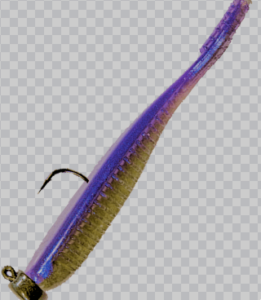How To Tie A Ned Rig For Bass Fishing

The Ned rig is a finesse technique that has gained popularity among bass anglers for its simplicity and effectiveness, especially in tough fishing conditions. Here’s a step-by-step guide on how to tie a Ned rig:
Materials Needed:
-
- Main fishing line
- Ned rig jig head (typically 1/16 to 1/4 ounces)
- Soft plastic stick bait or finesse worm (2.5 to 3 inches)
Steps to Tie a Ned Rig:
-
-
Select Your Ned Rig Jig Head:
- Choose a Ned rig jig head with the appropriate weight for your fishing conditions. Lighter weights work well for finesse presentations in shallow water or clear conditions, while heavier weights are suitable for deeper water or windy conditions.
- Choose a Ned rig jig head with the appropriate weight for your fishing conditions. Lighter weights work well for finesse presentations in shallow water or clear conditions, while heavier weights are suitable for deeper water or windy conditions.
-
Tie the Jig Head to the Line:
- Use a strong knot, such as the improved clinch knot or Palomar knot, to tie the Ned rig jig head to your main fishing line. Ensure the knot is tight and secure, then trim any excess line.
- Use a strong knot, such as the improved clinch knot or Palomar knot, to tie the Ned rig jig head to your main fishing line. Ensure the knot is tight and secure, then trim any excess line.
-
Rig the Soft Plastic Bait:
- Select a soft plastic stick bait or finesse worm that matches the size and style of the Ned rig jig head.
- Steps to Rig the Bait:
- Insert the point of the jig hook into the head of the soft plastic bait.
- Thread the bait onto the hook until it reaches the bend of the hook.
- Push the bait up the hook shank until it covers the entire jig head, leaving the hook point exposed.
- Pinch the bait at the midpoint and create a slight bend or kink in the bait to increase its action.
-
Fishing with the Ned Rig:
-
-
Casting:
- Cast the rig to likely bass habitats, such as rocky areas, points, drop-offs, or submerged cover.
-
Let It Sink:
- Allow the Ned rig to sink to the bottom. The small profile of the jig head and bait combo will slowly descend, mimicking a natural prey item.
-
Retrieve Technique:
- Use a slow and steady retrieve with occasional pauses or hops to impart subtle action to the bait. The key is to keep the bait in contact with the bottom while maintaining a natural presentation.
- Drag and Shake: Slowly drag the rig along the bottom, pausing periodically to shake the rod tip. This mimics the movement of a small baitfish or invertebrate foraging along the bottom.
- Dead Stick: Allow the rig to sit motionless on the bottom for extended periods. Bass often pick up the bait while it’s stationary, especially in colder water or when they are less active.
-
Feel for Bites:
- Pay close attention to any changes in line tension or subtle taps on the line. Since the Ned rig is often fished with light line and tackle, bites may be subtle.
-
Set the Hook:
- When you feel a bite, reel in any slack and set the hook with a firm upward motion. Since the hook is usually exposed or lightly embedded in the bait, a solid hook set is necessary.
-
By following these steps, you can effectively set up and fish with a Ned rig, a finesse technique that can produce bites even in challenging fishing conditions.
